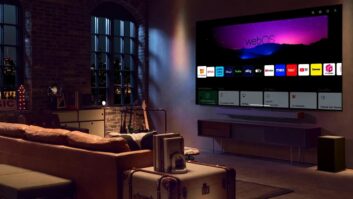New York — Market research firm Centris has issued a study showing what it calls “serious gaps” in digital TV signal coverage across the country, which could interfere with the successful completion of the digital television transition on Feb. 17, 2009.
The Centris study examined several large TV markets and exercised models of coverage to determine how many broadcast stations could be received in ZIP codes within 5-mile intervals of the TV towers in a 60- to 75-mile radius corresponding to the Federal Communications Commission- (FCC) identified service contours.
“Alarmingly, the results showed that there was little continuous coverage beyond 35 miles,” Centris stated. “The explanation lies in the fact that the antenna web model used in the Centris study takes into account outdoor receiving antenna sensitivity and multipath interference.”
Centris said households that are not elevated; are surrounded by trees; or have set-top antennas instead of roof-top antennas are more likely to have reception issues including limited or no signal coverage.
Centris said its surveys reveal that 75 percent or more of over-the-air households have only set-top antennas.
“We predict that digital TV signal coverage will be more limited than currently anticipated. An issue that, until now, has been completely overlooked by the FCC and governing bodies, and could have serious — and costly — implications for millions of consumers,” stated David Klein, Centris executive VP.
Centris estimated more than 40 million households currently receive over-the-air analog signals in the United States, reflecting a combined total of as many as 117 million sets that are unconnected from cable or satellite video networks. That figure “far exceeds any previous projections” on the number of people to be affected by the switch to digital TV broadcasting, Centris said.
“With less than one year — and counting — until the DTV transition takes places, the potential gaps in digital coverage present a huge problem for the TV industry, and an equally large opportunity for cable, satellite and telecom video service providers as well as for manufacturers and distributors of `smart’ television antennas,” Centris said. “Similar problems have emerged in the digital transition taking place in the U.K., where it is recognized that problems with digital coverage will require the use of more sophisticated antennas.”
Over-the-air (OTA) consumers are currently being educated on three available options. Two of the three options — acquiring new digital TV sets and purchasing government subsidized digital-analog converter boxes — are entirely dependent upon receiving digital TV signals through an antenna. Without adequate broadcast signal coverage or a sufficiently sensitive roof-top antenna, Centris said, these options will not work.
For consumers living in problem areas where broadcast gaps exist, installing a sophisticated roof-top antenna is a possible option but signing up for a cable, satellite or telecom video provider is the only guarantee that their TV sets will continue to work. This is not what the federal government claims, Centris said.
“Consumers are being urged to purchase equipment that may or may not work when they bring it home — never before has such an important transition been conducted on a trial and error basis. The reality is, if consumers want guaranteed ‘free’ TV, they will have to pay for it,” says Klein.
Commenting on the study, a spokesperson for the Consumer Electronics Association, which administers the www.antennaweb.org program, said, “Centris’ claims and figures do not match up well with much of the existing research on the number of TVs affected by the DTV transition, coverage of DTV signals and awareness of the transition.
“For example, CEA estimates only 11 percent of television households, approximately 13 million, are solely over-the-air households,” the CEA continued. “Broadcasters will certainly maximize their coverage as they take down their analog facilities and make adjustments during the transition. Receiving equipment is getting better all the time, especially with respect to multipath interference. As for awareness of the transition, CEA just completed research that shows consumer awareness of the transition to digital television grew 80 percent since 2006.
“It is inevitable that there will be differences in reception capability as we replace the broadcast TV system that has been in place for decades; however, Centris appears overly pessimistic in its projections,” the CEA concluded.
“These are very real factors that have until now not been accounted for,” stated Barry Goodstadt, Centris senior VP. “The effect will have extensive ramifications, not only among consumers, but also electronics retailers and manufacturers who can expect an influx of costly returns when it is realized that the converter boxes and new digital TV’s don’t work. In addition, with so many sets potentially at risk of going dark, network, local and public television, advertisers and agencies will likely be adversely affected.”













